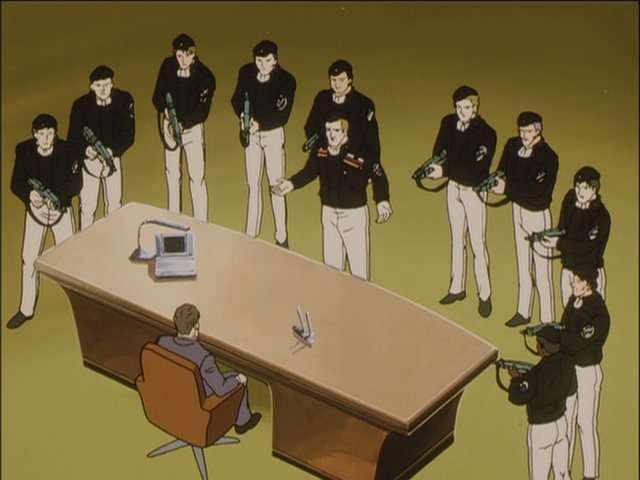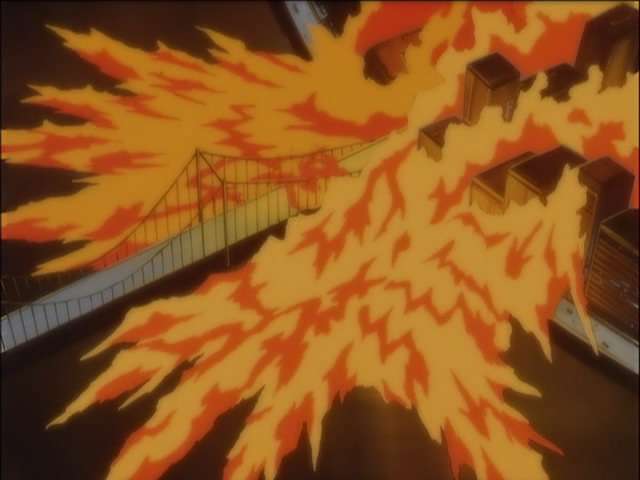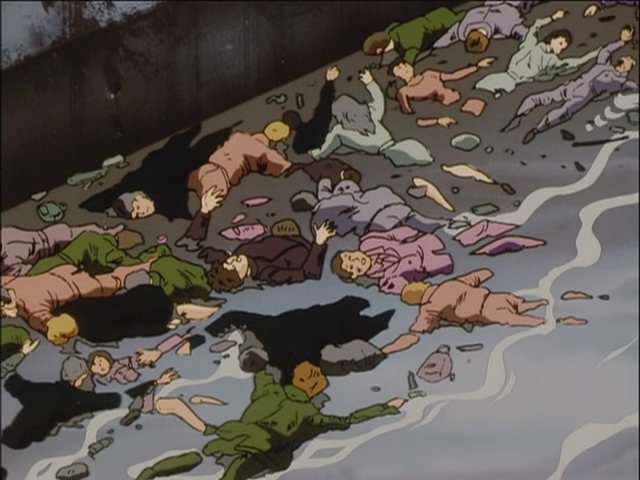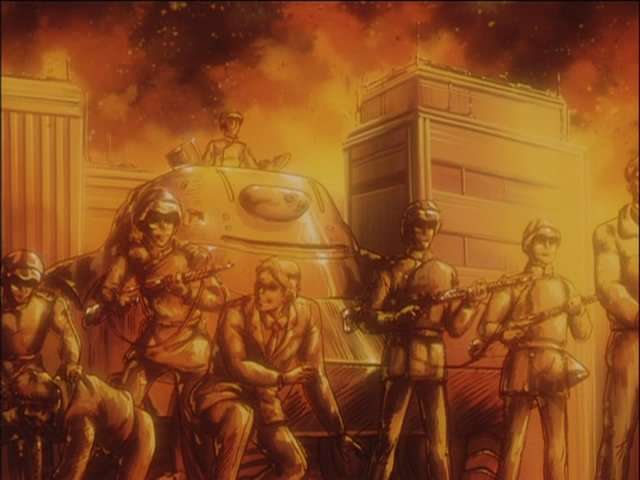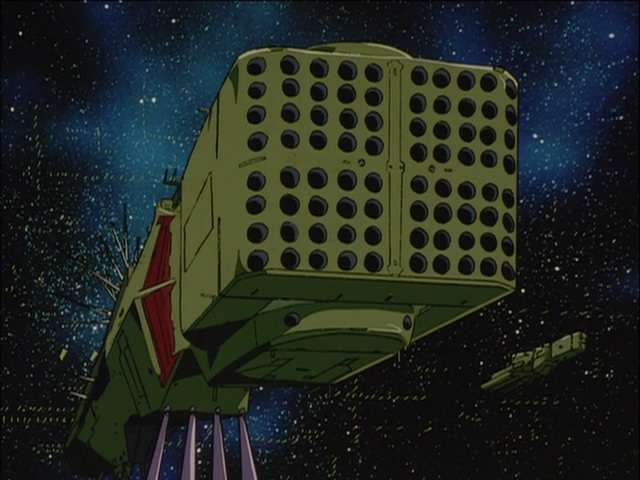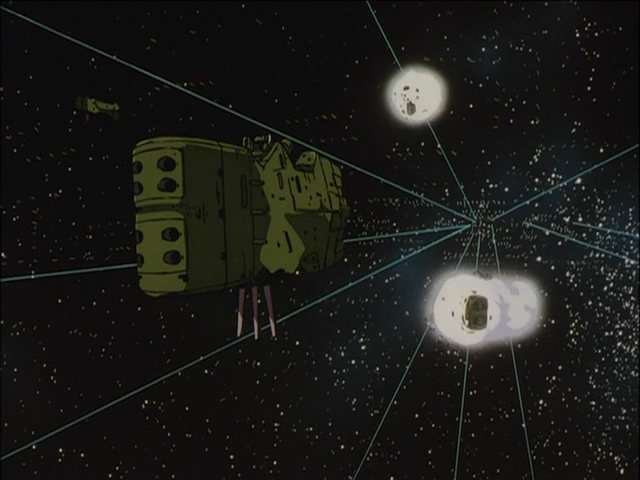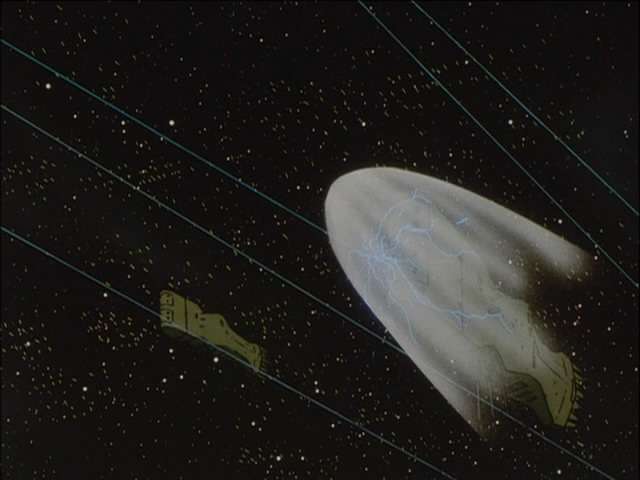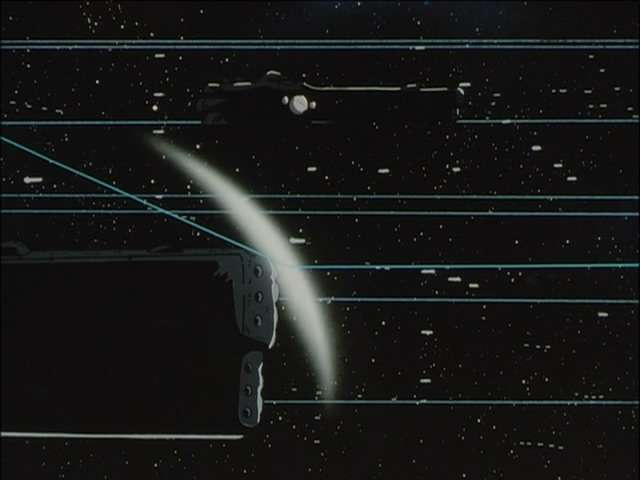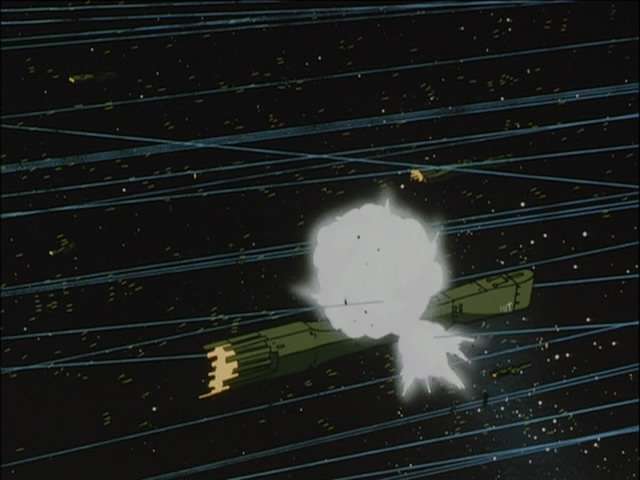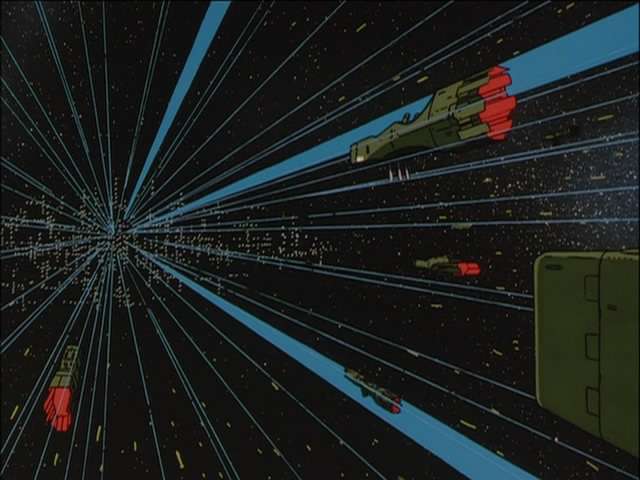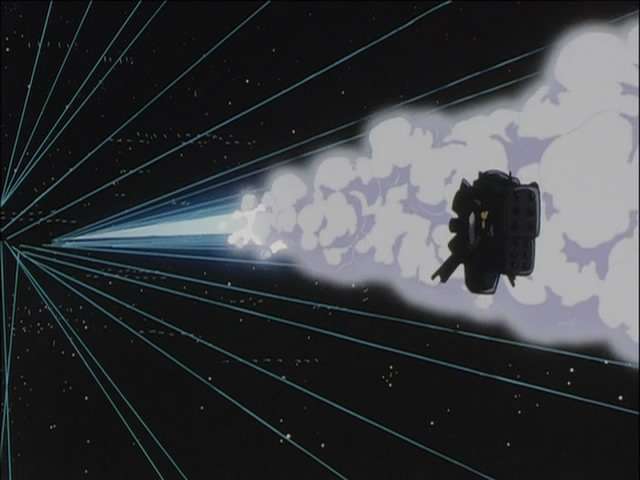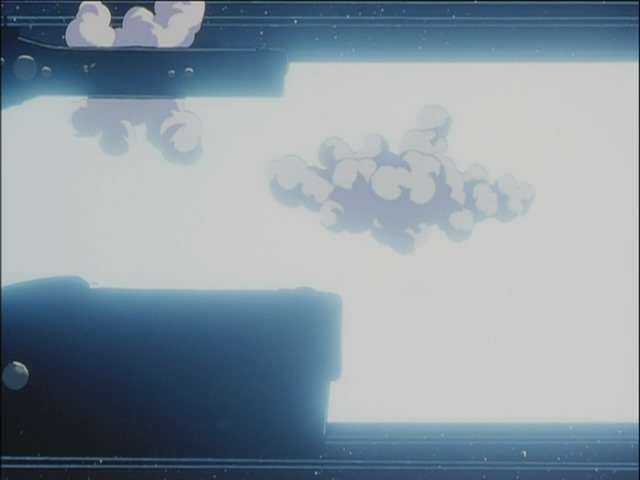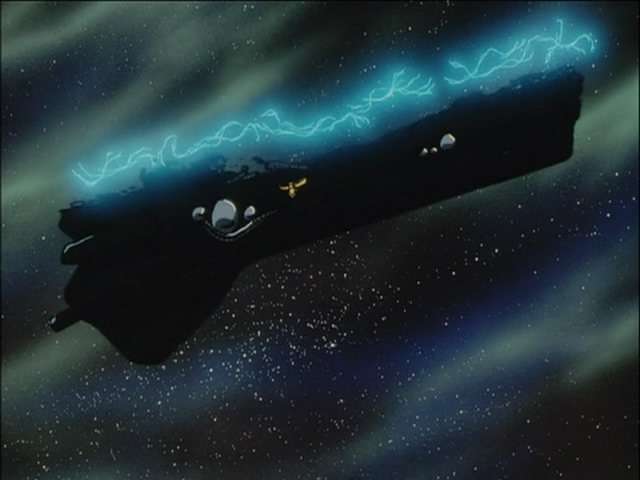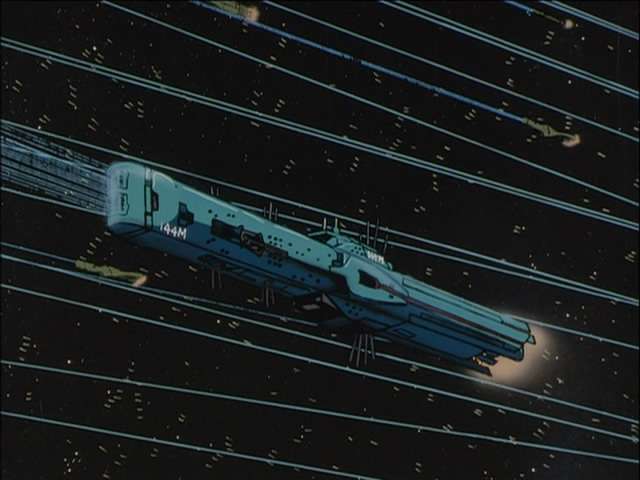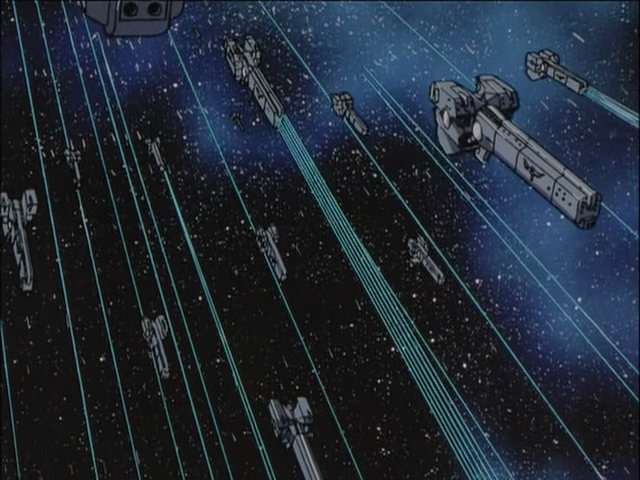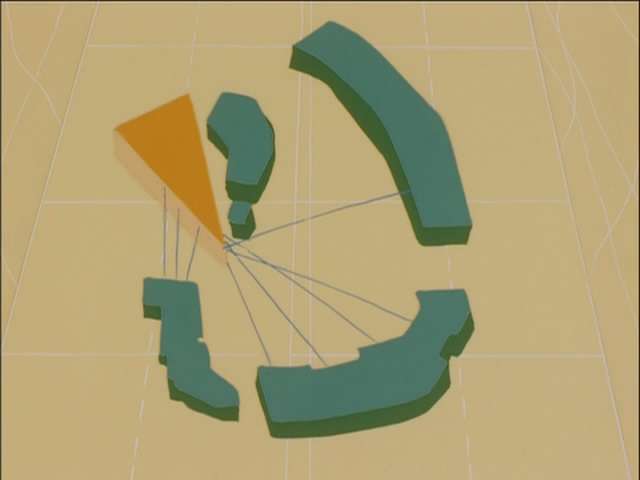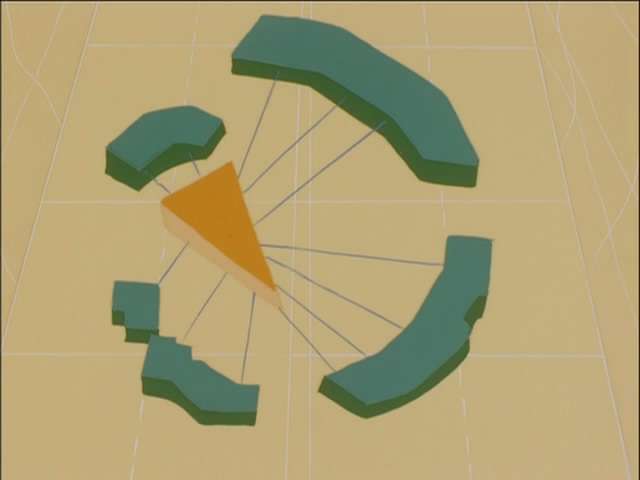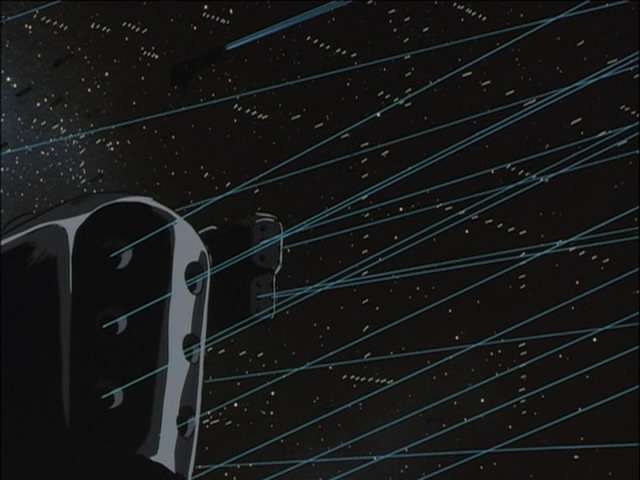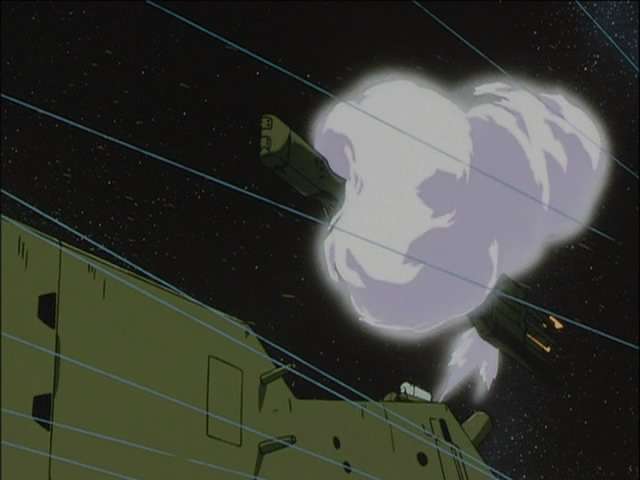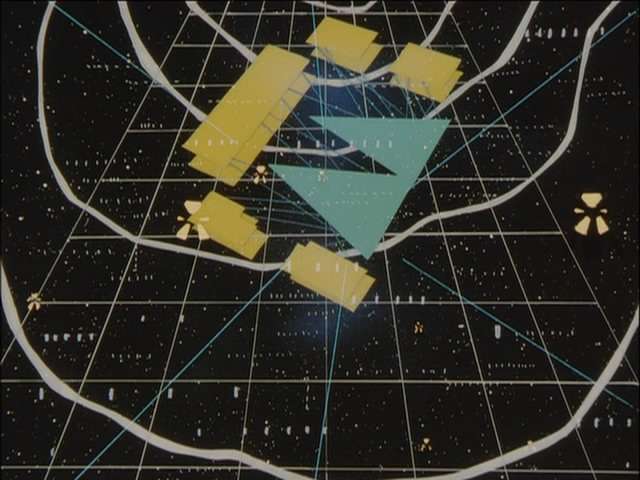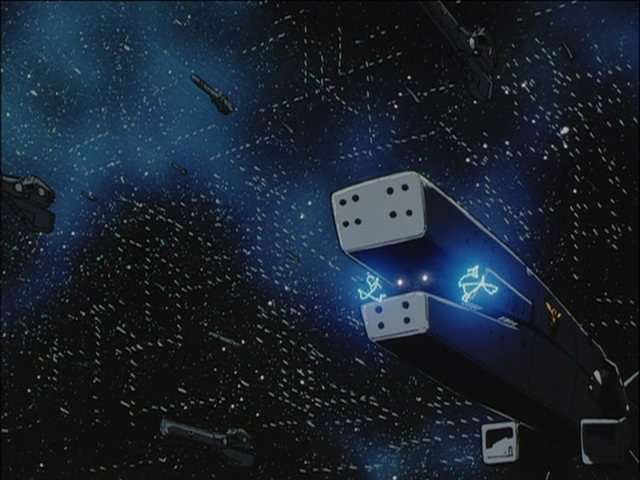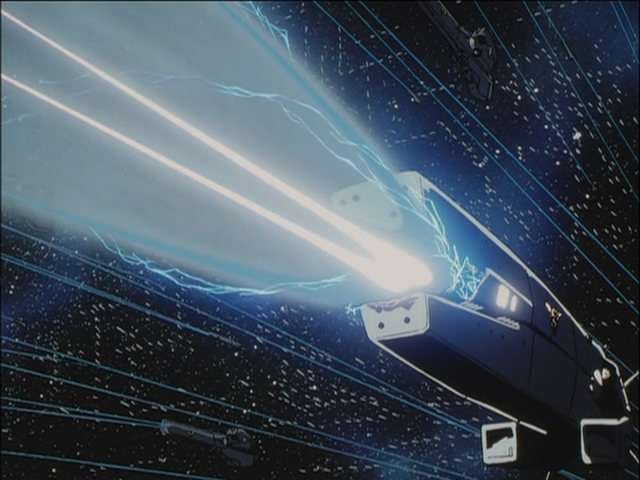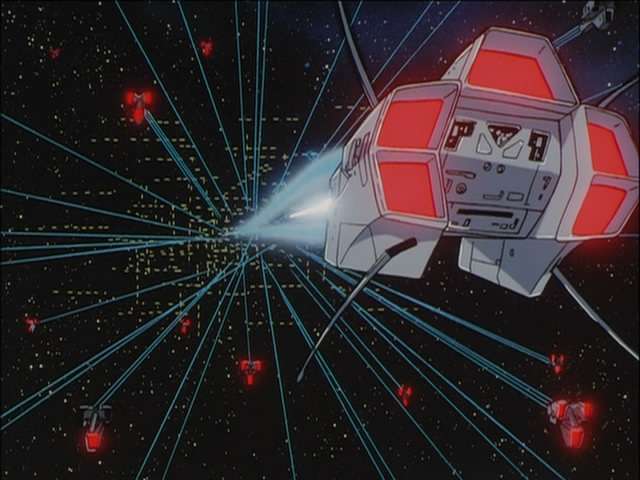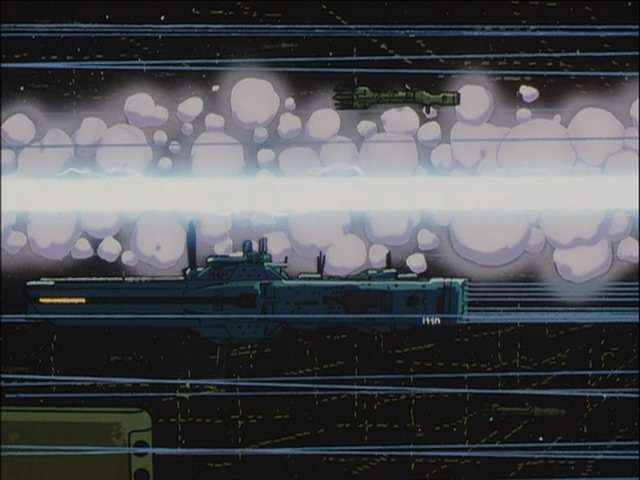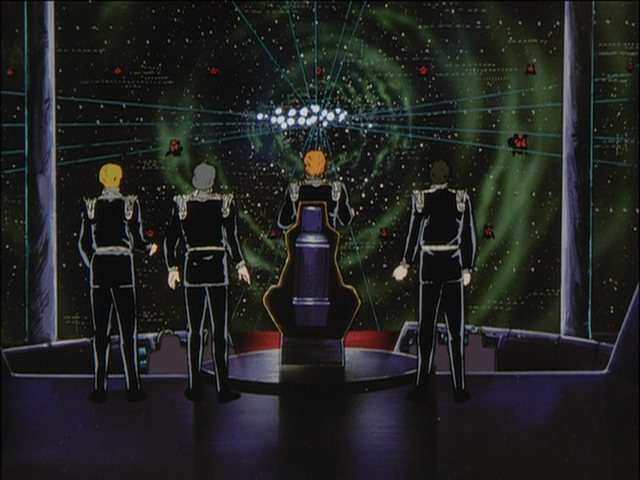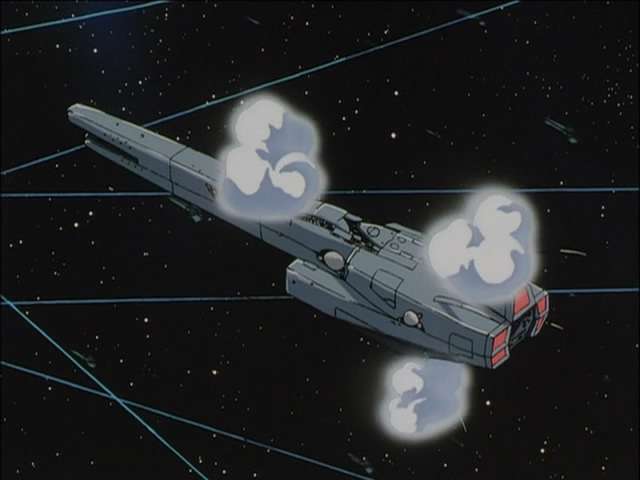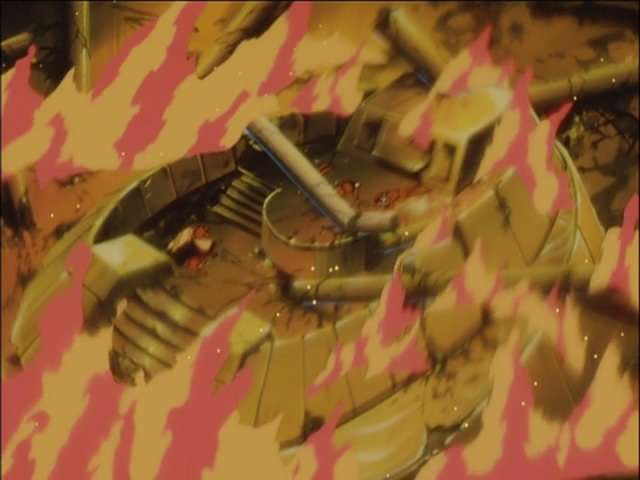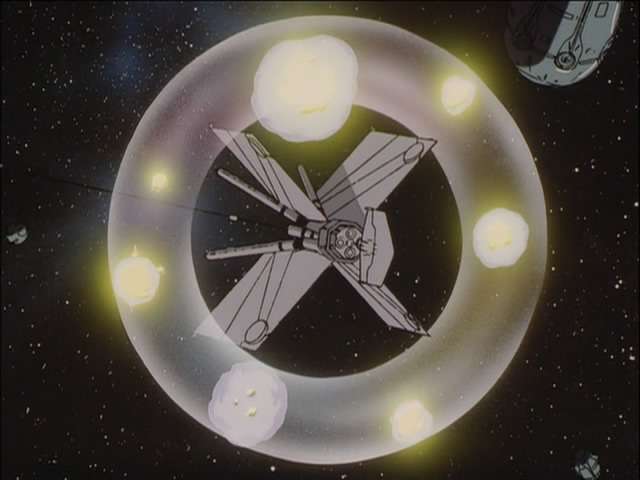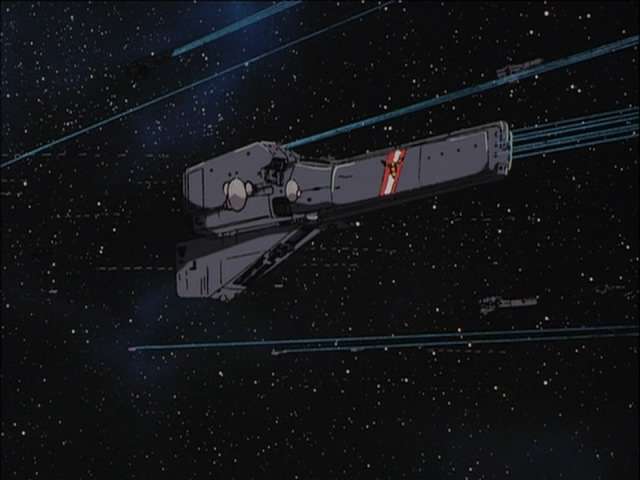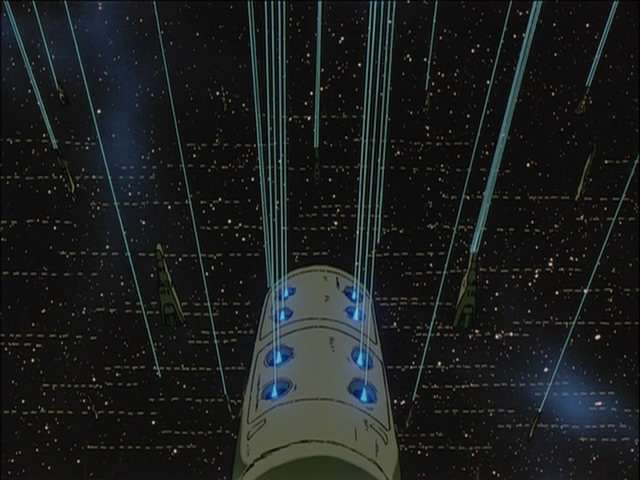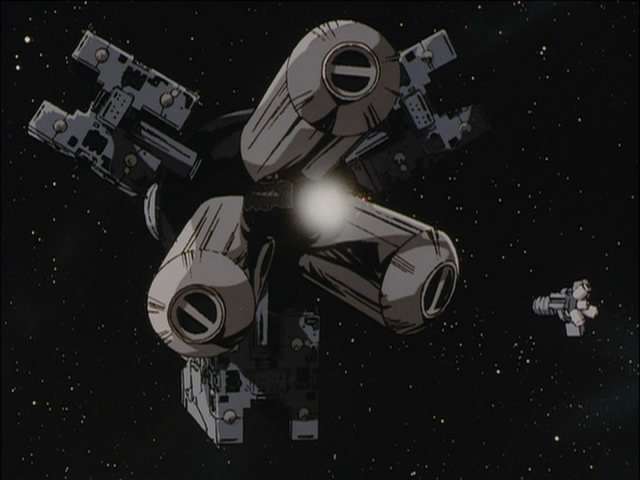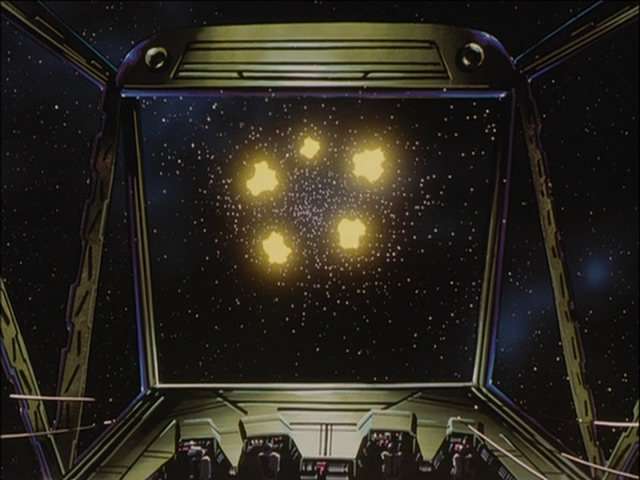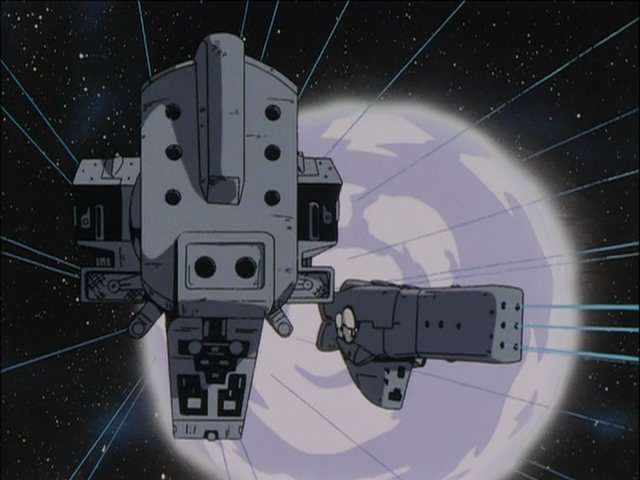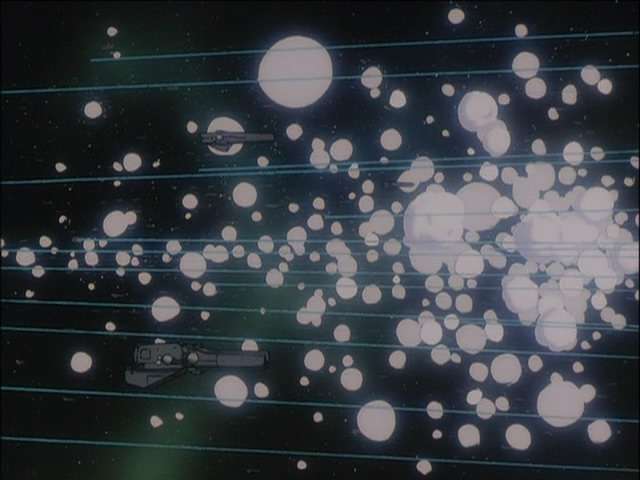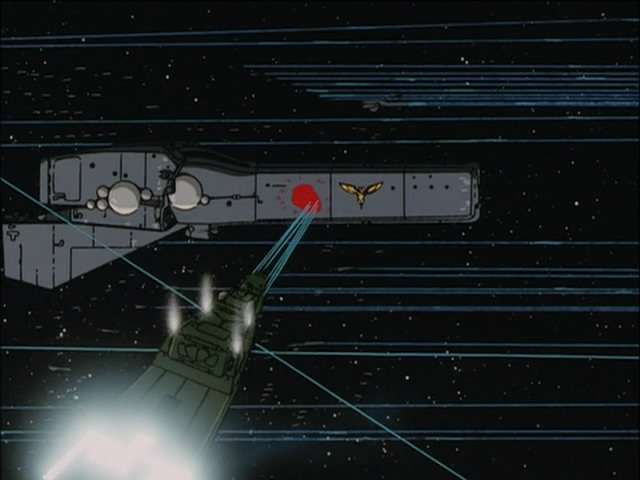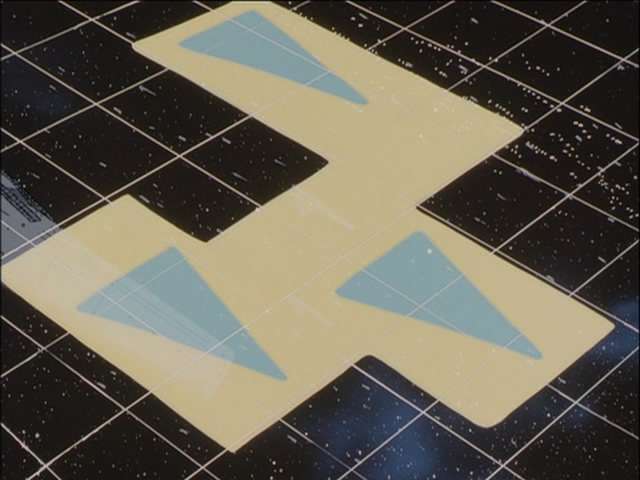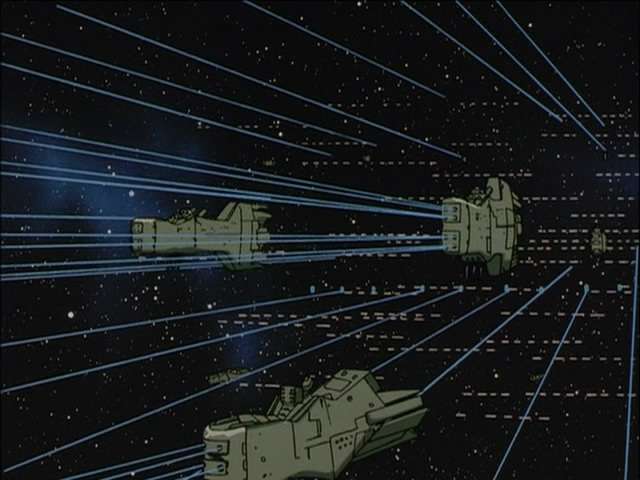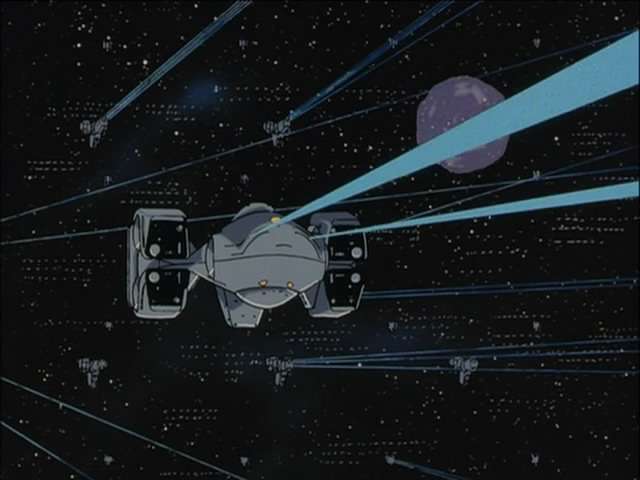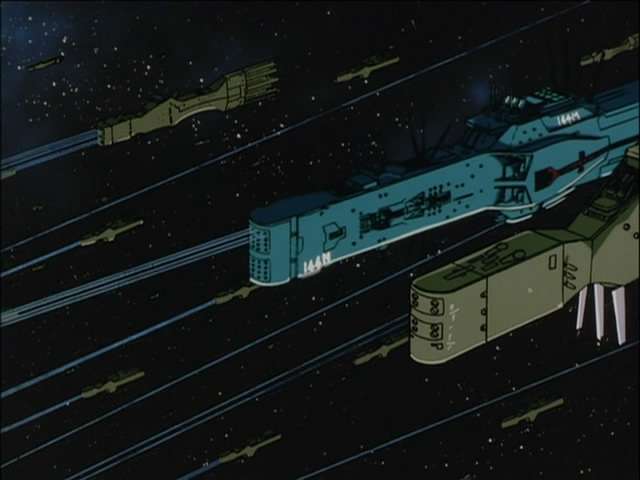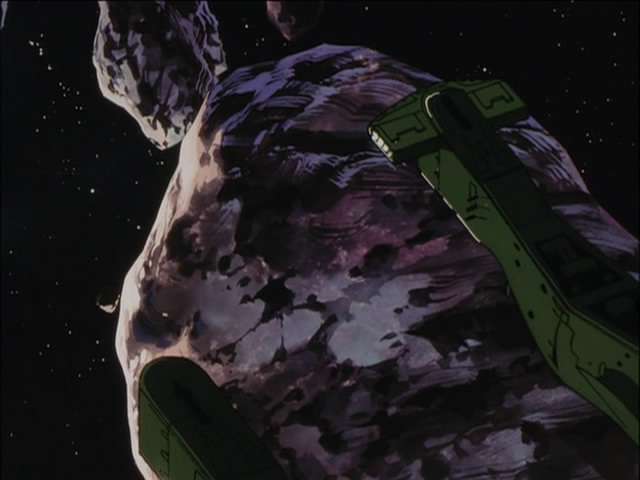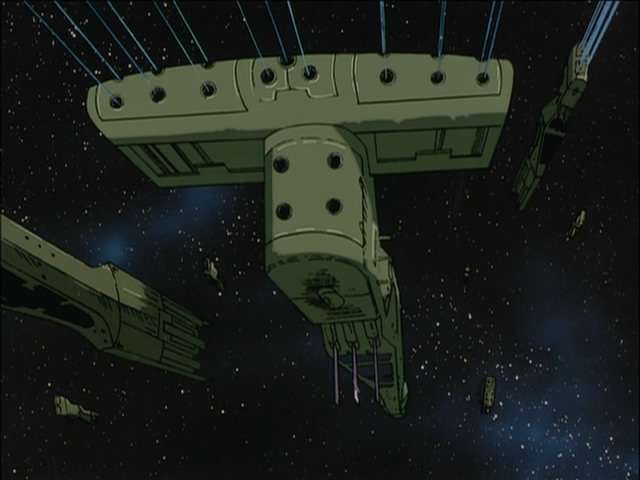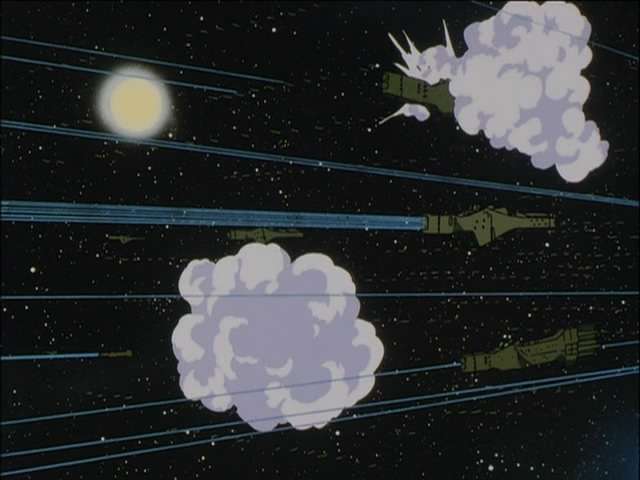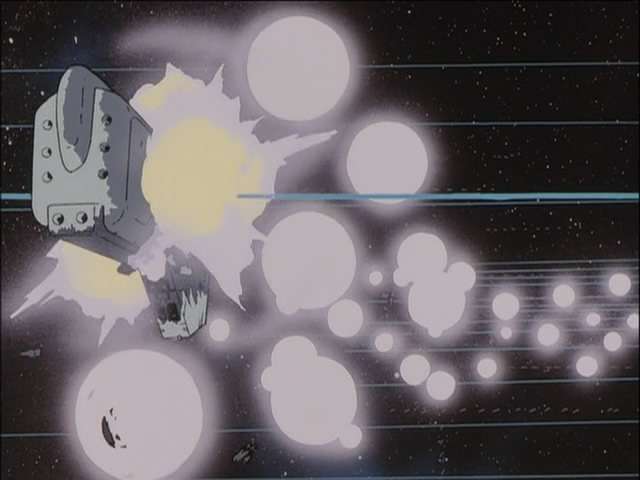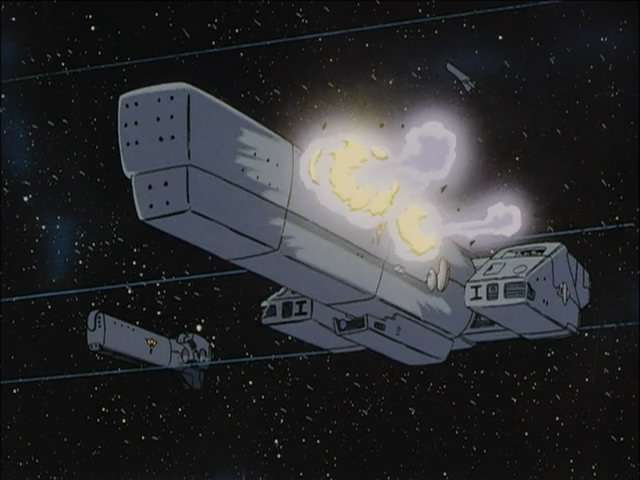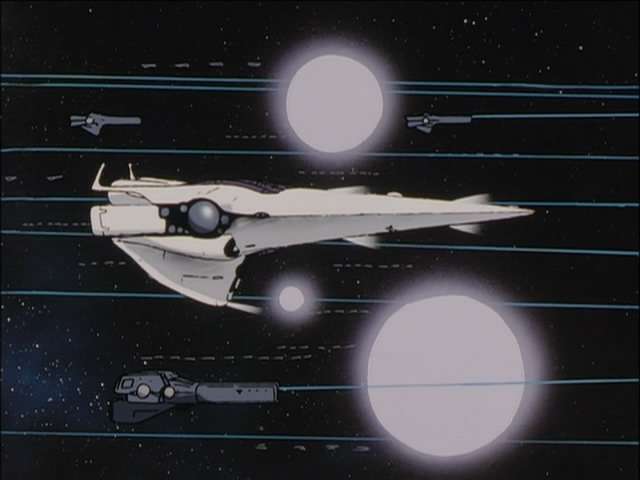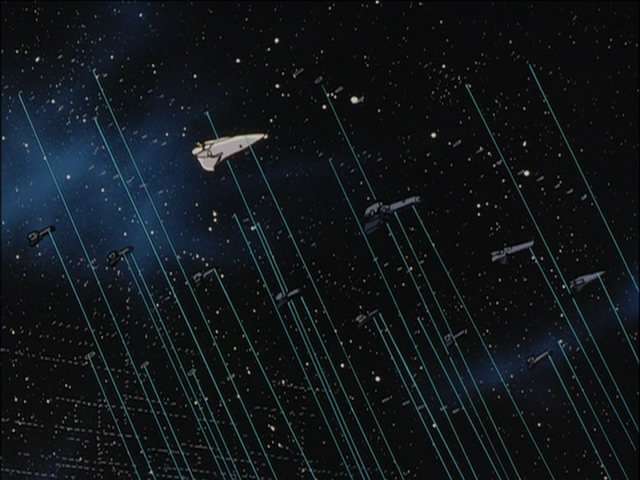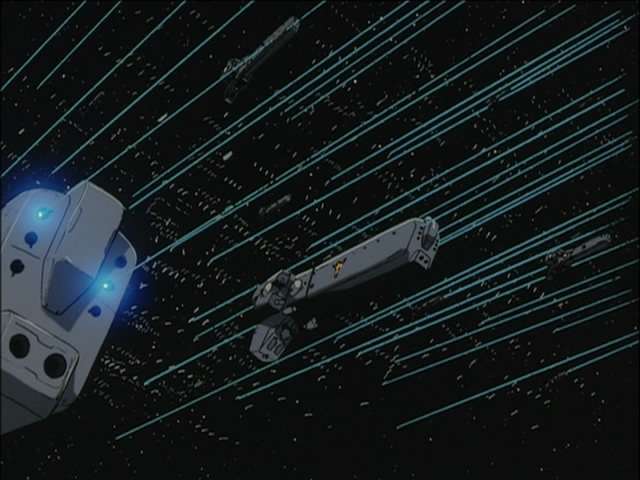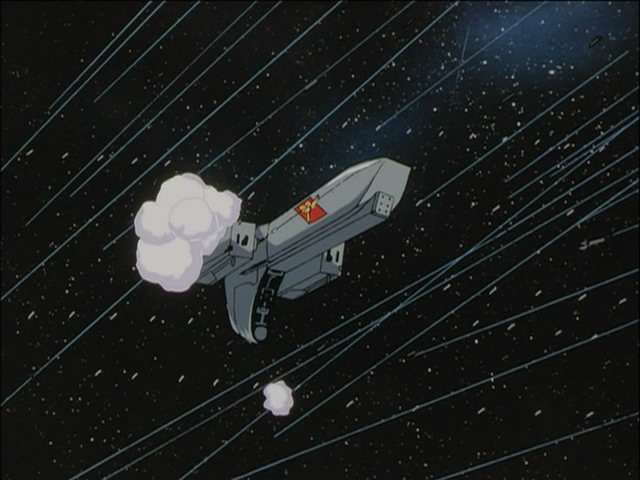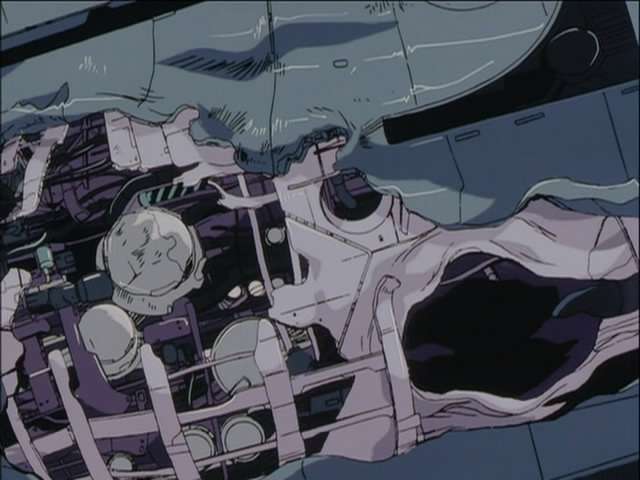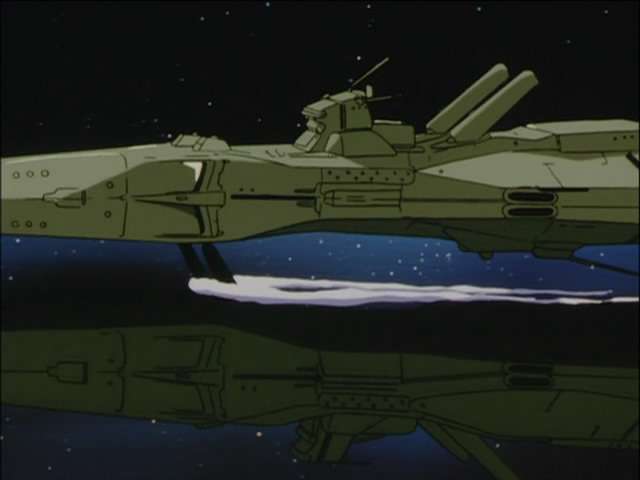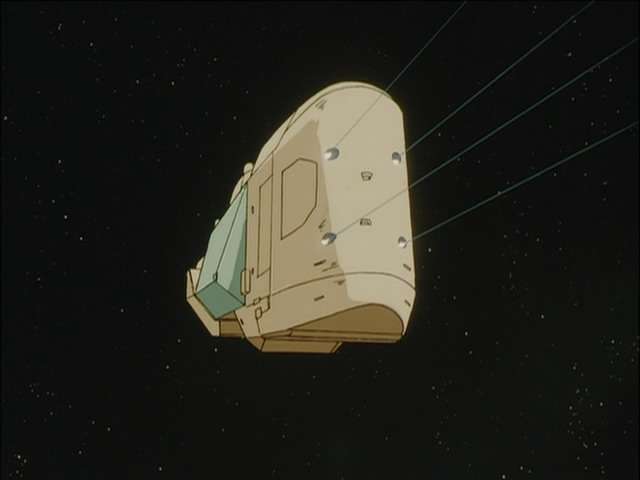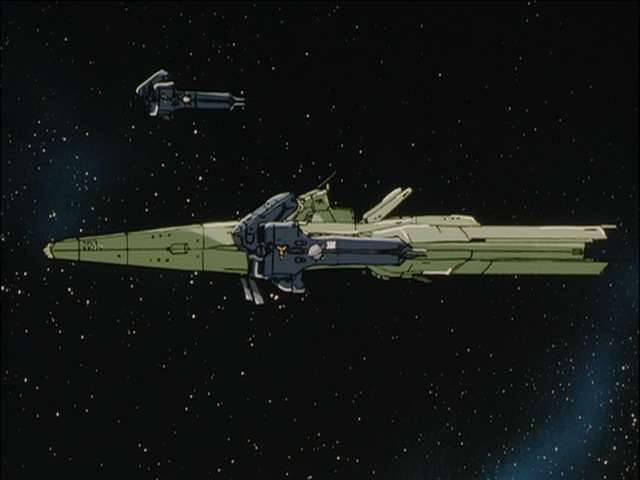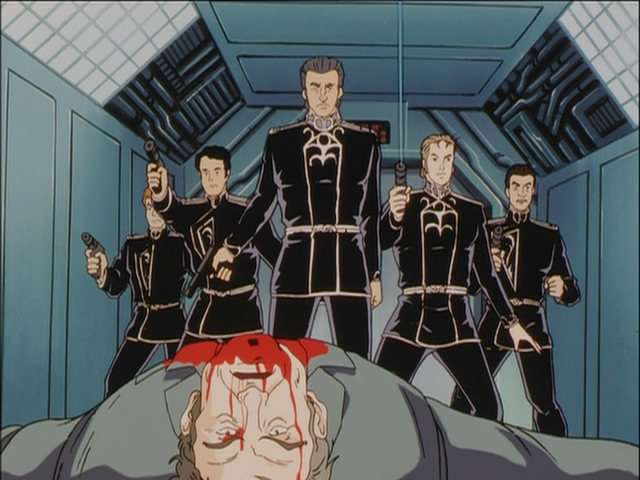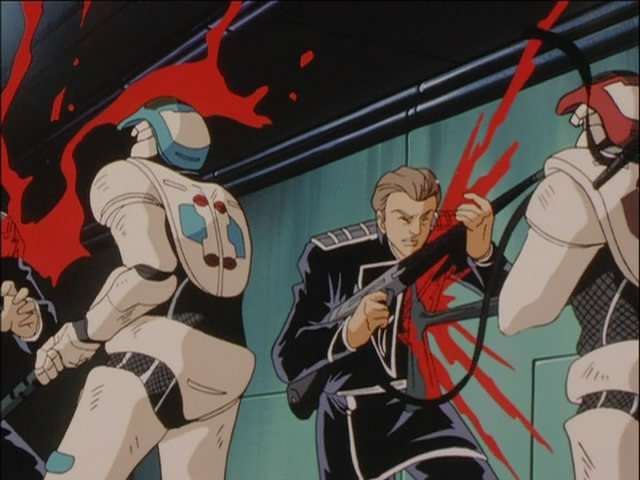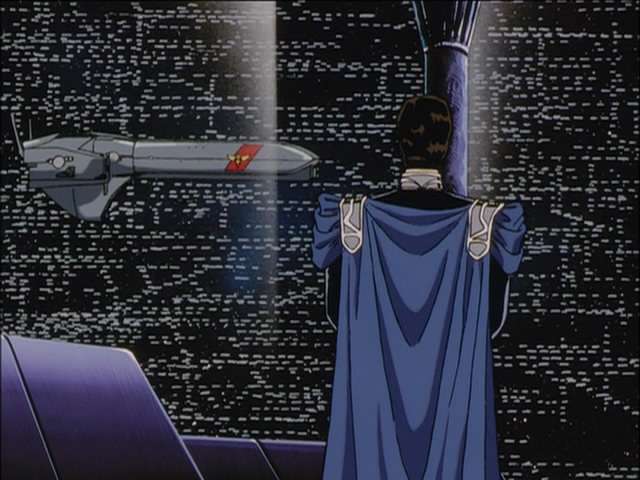Impatience struck again, I'm going to throw out the last of my "catch up" ontes from everything up to page 16. I actually haven't included the stuff from the last two updates (Auguest and Sept, basically ep 55 onwards IIRC) so this is out of order. Putting my 40K and RL stuff in order has delayed me in actually digging into LOGH much more than this (I don't need a third universe YET to encroach on my time, but doing this is a fun distraction from 40K, esp since the REnegade LEgion stuff is almost done.)
The Lippstadt Rebellion
To guard against Prince Braunschweig and Marquis Littenheim – who of course wished to use their children as tools to acquire the throne – and had their own forces - Marquis Lichtenlade (who had no military forces) would look to Count Lohengramm.
It's interesting the nobles have their own military forces and could (in numbers) threaten the Imperial Navy. On the other hand it makes me wonder how the FPA ever thought it could invade and conquer the Empire. (also, where were such ships when they FPA took 200 or so systems?)
First time we also see the security forces (unarmored) in real action. I wonder now if they represent the "defensive" military forces of a planet - those that are expected to keep the peace, or to defend it in case of invasion? If so it could be they have body armor stored but just not used.
Combined, the wealth and power of the high nobles was far greater than that of Reinhard’s forces.
...
Hilda reasoned that the Braunschweig-Littenheim Alliance was one of temporary convenience, and that they had failed to influence the fleet’s chain of command in any meaningful sense – even if the military force they assembled was greater than Reinhard’s, their defeat was certain. Further, the lesser nobles and common soldiery were more likely to side with Reinhard.
Presumably this includes military power, in numbers if not quality. It does suggest that the Lippstadt forces may have been larger, but it wasn't a certainty, and the numbers alone were either not great enough or capable enough to offset the Imperial Military.
I would assume Reinhard has most if not all of the 100K ships he comanded against the FPA a short time ago.
Prince Braunschweig was the leader, with Marquis Littenheim as second in command. 3,760 nobles took part. Their combined military forces, being both regulars and private troops, were roughly 25.6 million men.
Going by a rough 150 or so men average.. thats around 150-200 thousand ships, assuming this does not include ground forces (probably doesn't - they never seem to add those into the in-show numbers when talking about troops numbers) It is unlikely that the Imperial forces are significantly larger, so this suggests 300-400,000 ships total, both for navy proper and "private" fleets... but no more than 500-600,000 (which would have given Reinhard a 2:1 ratio.. which should lead to overwhelmign victory and no chance for the Lippstadt side at all.) It could be that those numbers don't include patrol ships, recon ships, and the like.
This suggests the nobles had on average fewer than 7-10K men apiece, since as noted the Lippstadt side hadn't made significant inroads with the military, meaning the bulk of their forces were private military in all likelihood.
One of the key thiungs that isn't elaborated on (yet): Do each of the high nobles have their own planets/territories, or do they share territories? This could be important as it might give us a benchmark on how many planets the Empire has.
I would also assume at least 1-3 battleships per Noble at least..
many of the other high nobles managed to leave Odin in their personal ships before they could be caught. The Wahlen Fleet waited for them in orbit, firing warning shots at first. However, Braunschweig and Littenheim managed to get away, using civilian ships as a shield
Indication that private ships exist, and they appear to be FTL capable (at least they ought to be if they intend to escape)
Geiersberg Fortress, since the capture of Iserlohn, was the most important fortress in Imperial territory. It had accommodations for a stationed fleet of 16,000 ships. 45km in diameter, its main weapon - the Vulture’s Claw, was a hard X-Ray beam weapon with a power output of 740 terawatts – almost a match for the Thor Hammer of Iserlohn.
Funny enough, the lousy sub I have gives Geiersburg as having a RADIUS of 45 km. Pesky translations again. They also claim the main cannon has a "power" of 74 million watts. We're missing a few zeros there it seems

They also say its power is "comparable" to Iserlohn, but is still larger (Which only reinforces the Death STar analogy to me. I wonder if the LOGH writers were EU fans or something.)
I'm not going to assume that it's the right one this time, but its still interesting how "translation" leads to dramatically different conclusions.
Regarding the ground battle/armor discussion: Do we know they use particle beam hand weapons, or are they lasers?
A perverse idea I had is that the crossbows are electromagnetically propelled like a bowcaster.
Commander 598's idea as to why crossbows are used is interesting, though. That might kinda fit in with stuff like hydrometal, or why starships seem vulnerable to large impacts but stop beams. (LOGH defneses seem to favor stopping high energy/velocity, low mass/momentum attacks as a rule) It could be a further indication of cultural stagnation (or arrogance) on the noble's part. Maybe they consider it more "refined" rather than practical. Pneumatic weapons, EM weapons or something like that are still options, or maybe some sort of inert-gas propellant. Of course we've had a common thread where warfare, science, politics and economics for both the FPA and the Empire have been manipulated by other parties (EG PHezzan and Earth) - so the axes and crossbows may just be a reflection of that irrational manipulation and the long held "traditions" and general stagnation in the war and suchnot.
This leads to an interesting question: does the FPA use crossbows ever, or is it just the Imperial side? I can only recall ever seeing the Imperial side use them.
Merkatz therefore proposed that the 9 bases have no forces save for reconnaissance and communications – concentrating all real strength at Geiersberg for a decisive battle, and only attacking when Reinhard reached the limits of his supply.
I'm guessing most systems have at least a base of some kind, which have some measure of military, recon, and communications forces. Also note they seem to need to keep "lines of communication" open, although the meaning of this isn't obvious.
Beowulf launches mooring lines
I wonder if this is anything like the Salamander's grapples. We see this quite a few times through the series where ships throw off lines/grapples - they seem to require physical anchoring against any solid matter as if they might "float away" - maybe its the nature of their antigravity in proximity ot large masses or something - grapples may be used because they don't have force field tractor beams

Out of universe reasoning is, I suspect, a stylistic rather than practical one. GRapples just "fit in" with the aesthetic they tried to convey.
Beaten by surrounding soldiers as he advanced towards the throne, he was shot and killed by Braunchsweig’s subordinate, Commodore Ansbach.
Shot through the head. It would seem that the shot did a fair degree of brain damage (some matter shooting out) and tremendous bleeding (no cauterization.) and overpenetrated as beams are wont to do, but the head remained intact and the entry/exit wounds were narrow (about 3-5 cm is my guess). Single digit kilojoules easily for the damage, although the overpentration makes it a lower limit (like with most hand weapon calcs, really.)
Marquis Littenheim had decided to go seek out some of his own glory by leading a fleet to the frontier systems against “that redheaded brat”, High
Admiral Kircheis. Kircheis, with Wahlen and Lutz under his command, had brought the frontier sectors of the Empire out from under Lippstadt control. Crossing the frontier sixty times, he had won all of his battles, and then entrusted the occupied sectors to civilian autonomy.
60 times? how big is the frontier sectors? And how long did it take?
Marquis Littenheim led a fleet of 50,000 ships to the frontier, using Garmisch Fortress, located in the Kifeuser System, as his base for the campaign.
...
The combined Kircheis, Wahlen and Lutz fleets totaled 40,000 ships.
90K combined ships, at least. Garmisch is a non-hydrometal base (but seemingly still freaking massive.)
Informed that Kircheis’ fleet was taking a diamond formation, Littenheim, confident in his numerical advantage, declined to respond in kind, and had his fleet open fire at an extreme range –well outside the distance that their particle beams could pierce the enemy’s shields.
..
The Lutz fleet bore the brunt of Littenheim’s ineffectual opening salvo. Luring them in, Lutz waited until they were within 6 million kilometers, and returned fire to devastating effect.
Again, while penetration seems to be influenced by range, it doesn't seem to be an obvious one. I mean, otherwise why not concentrate fire and "burn through" shields at greater range? Also, if they just entered effective range you would think that penetration still wouldn't be terribly great, at least until you get closer.
Also, 20 light seconds is not the ABSOLUTE upper limit on their range - the beams can fire against targets (accurately it seems) from further away, but shields negate any ability to do damage. I imagine it also depends on the ship - a battleship can probably target a weaker enemy from a greater distance due to weaker defenses.
Seeing through the imperfections of the enemy formation, Kircheis cut a swathe through it with Barbarossa and his escorting fast battleships, making a mockery of a fleet over 50 times the size of his force.
Again we see formation seems to have a TREMENDOUS impact on offensive and defensive capabilities of ships. Given the lopsided fleet ratios, tactics/formation seem to be meant to matter far more than technological capability. Although to be fair, fast battleships tend to be more powerful than regular battleships, at least because of their larger size and larger number of guns if nothign else.
As the nobles cheered, long range missiles began to bombard the walls of Geiersberg
Presumably from outside the range of the main guns, so 1.5-2 light seconds.
...ordered a hard turn to port to stay off the expected route back to the fortress – irrespective of the risk of losing their navigation beacons by deviating from the customary pilot routes.
I dont quite understand the implications of this, but it may explain the relative lack of mobility and the formation stuff some (maybe they establish navigational paths or beacons for the fleets to travel along and they can't be expected to deviate.)
Just as Braunchweig’s ship was struck at the port, disabling its rear gun turrets, Merkatz came to the rescue from Geiersberg.
...
Reducing speed and pulling back, they quickly moved to minimize their losses whilst reorganizing into a spherical formation and optimizing for short-range battle, adjusting their guns and launching fighters.
Turrets? Also the "Convert to close range gunfire" makes me wonder - ar they talking about using broadside mounts?
In preparation for a siege of Geiersberg, the Lippstadt Alliance had intensified the exploitation of colonies under their control, confiscating resources for use by their forces.
I guess nobles are dependent upon their planets for at least some supplies. I wonder if the Navy prevents them from having any orbital assets, or the nobles just never bothered (hydroponics, astroid mining, etc.)
This also confirms that nobles control their own planets, and would tend to confirm my earlier assertion that there may be thousands of inhabited planets in the Empire.
Prince Braunschweig, already reeling from his defeat in the battle outside the fortress, determined that a nuclear strike should be launched on the planet, killing all 2 million citizens.
Even the other nobles on Geiersberg were taken back by this order- the use of thermonuclear weapons on a planet had been taboo since the “13 Day War” that nearly wiped out the human race.
This implies a mass extinction event of some kind, although the yield needed could vary depending on various factors. Small, rural-esque populations would hlep this considerably.
Also we get an estimate on population for at least one kind of planet. If we placed this on the earlier 200 system/50 million population, that means 25 inhabited systems out of 200 total, for 1 inhabited for every 8. That's 12,500 inhabited planets (Average) in the Empire. It's worth noting that Oberstein and Reinhard's discussion of Westerland indicates that the population is signficant, at least in Imperial terms. Given Earth's population relative to other systems it may not be so for FPA, however. This could lead to an interesting difference where the Empire holds more overall planets, but their population per planet is much smaller than the FPA.
Upon leaving Reinhard, Oberstein ordered Captain Ferner to send out a reconnaissance probe to Westerland.
...
Oberstein deceived Reinhard – saying 6 hours. In reality he knew it would occur in 4. We can only speculate that perhaps Oberstein decided to strip Reinhard of this ethical dilemma, for the good of the Empire.
...
Going to the bridge of the Brunhild, Reinhard was shocked at the images displayed before him – Oberstein simply stated that the enemy attack was earlier than expected.
Not one to be fooled, Reinhard asked where the images were coming from. Oberstein’s answer – that it had been sent out ahead as a precaution – made the deception amply clear
This implies it took a mere 4 hours to reach Westerland, at least for the probe if not for warships. Was the probe manned or unmanned?
Also, the probe managed to transmit back visual data FTL, I'd gather. A few thousand (2-3 thousand) LY maybe judging by the best map I can find. That'd be pretty fast (millions of c), especially if its realtime.
It's really hard for me to make definite estimates on the bombardment. They clearly intended to wipe out all life on the planet with nuclear strikes, but there are some caveats to that:
- very little in the way of ejecta, cratering, large scale observed firestorms, dust loading, and the like. There may be ways around that, of course, depending on the level of nukeage, but there's limits (especailly in terms of firestorms). Getting the total up into the teraton range seems highly questionable. One thing to note is that with a relatively light population and a fairly centralized habitation, you don't have to be too widespread in dealing damage to wipe people out, so that is one factor that will help reduce the overall yield requirements. Use of airbursts could further reduce that some. Even so I'd be surprised if it went higher than a few teratons, if even that.
We don't really have definite ideas on the number of missiles, timeframe, or number of ships, so even if we make an estimate of total firepower delivered we can't do much more without making more assumptions. If we made a Wild assed guess at 10,000 missiles being chucked at the planet, and about a million megatons.. that would be 100 mt per missile, just for a crazy example.
Now we skip. The one thing worth noting is this image of the
Brunhild mainly because it dmeonstrates several gunports firing separate, distinct beams on different trajectories.
here we have a notable incident of the gun room firefight with guns being used that aren't any sort of obvious beam or "slow moving blue pulse" type weapon. I think these may be actual projectile weapons.
...Rear Admiral Karl Robert Steinmetz (former captain of the Brunhild, and now Vice Admiral for his distinguished actions in the frontier campaign, where he secured 17 sectors...
Assuming 5-10 LY average per "sector" (sector = system) and 17 sectors crossed 60 times... that would be 5-10K LY crossed by Kircheis and his group, I'd guess. No idea how long it took to do that.
Reinhard asssaination attempt:
Opening the medical capsule, he pulled out a rocket launcher which had been stuffed into Braunschweig’s corpse and took aim.
It could be there is some way this can be more plausible than it sounds, but the idea that people would just sit around in horror while Ansbach does this is both hiarious and kinda retarded.
Unfortunately Kircheis could not have known Ansbach was wearing a ring with a hidden particle beam – he fired two shots, one in Kircheis chest, the other in his neck as they fell to the ground.
That has some curious implications for weapons technology, even if its a high-tech/unusual design. That's a TINY ring, yet it overpenetrated all the way through the upper chest of a person (creating a wound several cm in diameter, easy) That's easily within several kilojoules worth (at least going by Atomic Rockets/Laser Death Ray) type weapons. A pistol sized weapon is bound to have potential for more power (as well as way more shots)
Ring wise, the beam diameter is alot smaller too here.. I'd say a couple millimeters (3-5 tops) as opposd to the ~1 cm diameter I calced recently from
Rucke's pistol. If beam diameter had any relation to power, the difference in beam, power would be 4-10x. Although that's not a guaranteed or even ideal way to measure such things.
Curiously, no radiation side effects, however. If these are particle beams, its further proof they aren't normal particle beams.
It was agreed that the fastest ships from each fleet would be selected, and dispatched immediately to Odin (a 20 day journey from Geiersburg)
Straight line.. maybe 3500-4000 LY or so? ~60-70,000c maybe.
Above the Imperial city, ships being to drop paratroopers and light armor
...
Landing is forced at the main space dock … … and elsewhere
They need AG to pull off all this I think. Especially the armor.
Alliance civil war:
The Alliance government agreed – it meant up to around 5,000,000 extra votes (the POWs and their families) for the current High Council in the coming elections.
5 million votes matters? This owuld also tend to suggest families are rather small.
The fleet departed on April 20, Space Year 797.
I'd guess by the start of july they made it to Heinessen.. so 2-3 months to leave Iserlohn, suppress all 4 rebellious worlds, and reach Heinessen... maybe a 10-15k LY journey all told.. at least 40,000c to 90,000c.
Moments after Yang’s speech ended, the 11th Fleet was detected, moving orthogonal to the galactic plane, from port to starboard, at a range of 6.4 light seconds.
Any instance of ships moving to close range are probably calcable as velocity and acceleration. If it took half an hour for example it might be a few hundred gravities.
. His real concern was Heinessen’s population of 1 billion people, and their potential as hostages.
Billion populations exist, although as this is a capital that probably is the reason. They can't be terribly common.
.. the “Artemis Necklace” automatic defence system – a series of twelve unmanned weapons emplacements, clad in hydro-metal armor, ringed around Heinessen, creating a seemingly impregnable defence that could decimate a fleet before it could reply.
I guess the reason is that the Necklance stations have considerably greater range than starship weapons?
A curious point, it looks like the artemis necklace stations are invisible/transparent. Possibly the hydrometal has a cloaking effect.
The other main thing is that the Artemis necklace is one of the few examples of fully automated anything in LOGH. AT most you have limited computer assistance, of a very crude nature. This may suggest just how "held back" FPA/Imperial technology is compared to Phezzan, since IIRC the Necklace came from PHezzan, and this could suggest that more sophisitcated automation (to cut down or eliminate crew requirements) onboard ship is possible.
I'm going to skip over the impact of the ice cubes, I've covered this already.
My instinct is definitely to say that the 740TW figure is per square [unit of measurement]. Its not bad, given that the ships are usually bathed in the cannon's light for a few seconds before being destroyed. Though once more, that's Vulture Claw, not Thor Hammer, which is probably in excess of 800TW if I had to guess.
Depending on surface areas involved... several hundred GW to Several TW . Given Iserlohn could destroy at least 1000 ships in a single shot ( as mentioned earlier) - 740 gigawatts (assuming you can direct the energy so precisely as to hit all 1000 ships and nothing else, which is unrealistic.)
It's not wholly inconsistent on that basis, especially if you assume that (since they can fire for more than a single second, it might have a greater yield (even moreso if the "output" is based on charge time rathe than firing time) but the ship-melting (nevermind the "area of effecT" nature of the weapon) leads me to suspect there probably is a contradiction.
I remain convinced that the Thor's Hammer and Vulture's Claw are, for lack of a better term, "fusion flamethrowers" relatively short ranged-large area of effect weapons. The weapon could in that defintiion still output 740 TW in some manner yet have destructive effects far greater than the output (which I suspect is the case, given the "delay" in destroying ships in the path of the beam.)
It would also explain the various oddities of the weapon (how its damage "drops off" so rapidly beyond a specific range, why it is labeled as an "hard x-ray beam" weapon despite clearly having a distinct matter component, etc.) It coudl also explain why ships don't immediatley vaporize when thy get in the path of the beam (it may take time for the energies within the "flamethrower" to reach the energy/temperature thresholds where they can overwhelm the ship's defenses and obliterate it. If the Thor's hammer keeps pumping fuel into the stream I imagine the "fusion flamethrower" becomes self sustaining or even can grow in intensity over time.)
Season 2
Taking Attenborough by surprise, a relatively small Imperial fleet, under the command of Rear Admiral Eihendorf (part of Admiral Kempf’s fleet), was detected 50 minutes away. The force comprised:-
- 200 to 250 battleships;
- 400 to 500 cruisers;
- 1,000 destroyers; and
- 30 to 40 spacecraft carriers.
If this is a "fleet" we could assume the ratio is roughly comparable. That means for every battleship there would be:
2-3 cruisers (roughly) and 4-5 destroyers. For every 5-8 battleships there would be 1 carrier.
Assuming ~200,000 warships about half the fleet would be destroyers. About 2/3 of the remaining 100K would be cruisers, and the rest battleships (with a smattering of carriers.)
With heavy EM interference and jamming present, Attenborough could not be sure his request for reinforcements could be acknowledged. Further, the shuttle he had sent to deliver the request in person had not reported back.
Curious thing here. In the crappy subs they call it "electromagnetic" weaponry, whilst in the CA sub they call it "electronic."
Hugging the cruisers hull, he saw that it was preparing to launch missiles, and fired on them, destroying them and the entire cruiser with it.
...
A turret fails to see Julian’s Spartanian
...
The cruiser prepares to launch missiles
Curious that nuclear missiles explode like that. In any even, the missiles are easily as large as the Spartanian, probably larger (I'd say slightly wider, but 1.5-2x longer.. was hard to judge though.)
The turret incident was curious. Both the fact that the ship was flat out visible to us, but apparently not to the gunner. either those guns are automated, or the LOGH universe has some form of optical cloaking that (magiclaly) does not interfere with vision (not impossible, since they use viewscreens as "windows" - just extend some sort of sensor boom through the cloak) If that were the case, I'd assume that the fact we can see them is just documentary convenience or something.
It makes me wonder if that was part of the broadside beam cannon count, or entirely seperate. If so, then it makes one wonder why the broadside guns don't fire along. I'm also wondering if this was one of the "turrets" mentioned during the Lippstadt rebellion.
Another peculiar thing about the entire hull/fighter bit is that the hull appears to be rather morphable. Normalyl I might forgive the appearing/disappearing hatches as being just part of the drawing style (eg thy only seem to disappear), but the actual surface changes between the turret disappearing and the missiles appearing. Also, the missile launchers and the defense turret both seem to be rather uncomfortably close. Given the oddities mentioned about other armor, the existence of hydrometal, etc.. something odd about the hull like that would not be impossible, in my mind.
- the turret appears to be twice as wide and maybe half as tall as the Spartanian fighter.
The missiles are ~ twice the height (or 3-4 times the width) of the fighter cockpit and easily 2-3 times the length, subjectilvey. I'd guess relative to the ship, they're 1/4 the height with a length 6-8x the diameter.
In the meantime, the battle was going badly for Attenborough. Seven hours in, with damage mounting, he ordered the fleet to withdraw in the direction of the fortress
7 hour battle
re: the armor, but when the gun retracts back in you can see a hatch closing.
Yeah, but it does go "invisible." It could utilize some variation of "liquid metal" hull or something.
Big battle between the forts Geiersberg and Iserlohn:
Meanwhile, with Fezzan firmly in control of the Alliance economy (with the Alliance being in critical levels of debt due to loans taken out from Fezzan to continue prosecuting the war)...
...
.. Rubinsky’s plan was to financially control the Lohengramm Dynasty, and pull the strings..
Admiral Schaft had been in that position for 6 years, but so far his only achievement had been the development of directional zephyr particles. Phezzan offered him a plan – moving Geiersberg Fortress to the Iserlohn Corridor.
Specifically, twelve warp engines would be affixed around the fortress, allowing the Empire to challenge Iserlohn with a mobile fortress.
One obvious thing that leaps out is that Phezzan is vastly more technological than either the Empire or Alliance. This is likely because of a.) The entrenched stupidity at the higher levels of the alliance. Even Reinhard can't deliver miracles there, even if it occured to him, in such a short time. b.) The War is likely hampering technological progress for the Alliance due to the already strained (and beyond) nature of their economy (being in Debt to Phezzan by this point). The Empire is still suffering from the "elitist" approach to technology they have, which is bound to hamper their progress, but evne then I suspect they are hard pressed in R&D due to economic upheaval.
Secondly. Are the "warp engines" also sublight engines as well as FTL, or what?
Tests of the sublight engines proved a success – Geiersberg Fortress accelerated from 2,000km/h to 8,000km/h in approximately three seconds. Warp engine tests commenced afterwards.
I guess they just failed to mention the sublight engines.
It would be good to scale the engines and try to figure out how much mass they chucked into building those engines, as it serves as another interesting indicator of their industrial potential. It also strongly indicates that they don't need dedicated shipyards to do building (much like the Deaht STar does.)
If I did a rough mass right, assuming the belt is its ~2 km "thick" and about 5 km "wide" I'd guess its maybe a couple hundred billion tons at least, which they amassed, refined, and built with in the space of a couple months. That would also be the equivlaent of tens or hundreds of thousands of warships, in terms of raw resources.
Oh, and we get a good acceleration idea here. A 6000 kph difference in acceleration over three seconds is a velocity change of ~1,667 m/s, for an acceleration of ~556 m/s, or ~57 gees.
Considering what Geiersberg is, and how freaking massive it likely is.. that is.. impressive.
If we knew how much the station massed (there's one on the Wiki but I'm no longer trusting it, though its several tens of trillions of tons) we could probably figure out how much power the engines throw out (although I'm betting "insane" is a good guess.
It is also a remarkable feat of engineering to pull all this off whilst keeping the whole station (including its liquid metal shell) stable.
As an aside WRT accleeration.. I estimated Geiersberg covered about 1/10th or 1/12th of its diameter in about 1.5-2 seconds.. which is VERY close to the stated velocities... its a bit off, but as it's constant acceleration and its a viewscreen image, we probably can forgive some of it. so Kudos to the animators for at least seeming to get that right.
For the most part, we have just seen the Empire build their own (for all intents and purpose) Death STar, with all the implications and craziness therein.
The test was successful, and on March 18, 489, Geiersberg Fortress and a fleet of 16,000 ships (the number of ships Geiersburg could accommodate in its berths) and 2,000,000 troops embarked on their journey to the Iserlohn Corridor.
..
n April 10, the battleship Ulysses and her escorts, on patrol on the side of the Iserlohn Corridor facing the Empire, detected an object coming out of warp.
~22 days to cover ~5000 LY between Freya and the Corridor maybe? ~83,000c.
...to the Alliance High Commissioner’s office on Fezzan, with the news that repayment of 500 billion dinars worth of loans were now due.
Kesserling acknowledged that repayment of the loans was impossible for the Alliance in its precarious economic position
Hinting at the risk of another coup d’etat whereby Phezzan’s capital would be appropriated free of charge for the purpose of ‘national socialism’
Heh. I read this and I can't help but think of Republican France during the 19th century, especially pre Napoleonic france. The FPA just comes across that way so much.
Yang therefore received a summons to appear on Heinessen for an “inquiry”
...
Yang departed from Iserlohn in a cruiser, the Leda II..
Iserlohn to Heinnessen. Another case of 5,000 LY in less than 22 days, although how much I'm not sure.
As an aside, checking eps 30-32 on all this.. the crappy sub gives a "mass" to Geiersberg of a mere "400 million tons", whilst CA gives 40 trillion tons. Disregarding the usual issue of whether or not one side or another either added or left off a zero (this seems to happen A LOT I've noticed!) the crappy sub consistently seems to under-rate stuff in the "trillion" range as simply "million". For example CA gives the Vulture's Claw the 740 million megawatts, the crappy sub is 74 million watts. And 400 million tons vs 40 trillion.
This also leads me to wonder if there's some zero adding or dropping with regards to the population figures (the 40 billion vs 400 billion in various cases.) as well. Its just too precise to be coinciidence IMHO, although I'm not sure whether it should err in favor of tens or hundreds.
Both subs do give a consistent 300 Light second detection range for Geiersberg's emergence from Warp. Interesting that they were able to estimate its mass displacement from the disturbance.. that tells you something about the nature of LOGH FTL travel, I think. I'd have to think on it more to say what though. Even more impressive, warp is *dangerous*, as the emergence of Geiersberg sent ships flying from 300+ LS out.
By the way. 40 trillion tons (If that) and some 55-60 gravities (minimum) acceleration? we're talking well into the e26-e27 watt power output range for a Geiersberg's engines (assuming a 1e7-e8 thrust velocity. I'm feeing lazy tonight)
This is also without a doubt, conclusive proof they have SOME kind of FTL sensor, as they detected the mass long before it emerged from Warp.
– 45km in diameter, its surface covered in ceramic, alloy, and hydro-metal armor, and armed with the Vulture’s Claw, a solid X-Ray beam cannon, with a wavelength of 100 Angstroms and a power output reaching 740TW, it was slightly smaller than Iserlohn Fortress, but almost evenly matched in terms of firepower with Iserlohn’s Thor Hammer.
I won't bother to re-mention the crappy sub at this point, except to mention they do mention "radius of 45 km" once again.
I dont know what to make of "solid X-ray beam cannon" since "solid" should have nothing to do with photons. Unless, however, it means its some sort of radiation weapon composed of physical particles and x-rays togethre (EG the fusion-baesd flamethrower I mentioned)
"Angstrom" refers to a unit of measurement at the atomic scale and the like (.1 nm IIRC) and that would mean the wavelength are ~10 nanometers" which I *think* is soft x-rays. I was wondering if "solid" meant hard x-rays but.. eh. I'm hoping someone (like Simon - hint hint) will tell me if I was right or wrong (Its late and I'm too lazy to do revision, so sue me.)
A hyperspace message was also sent to Heinessen requesting reinforcements.
"Hyperspace message" - that suggests the method/means by which FTL communication occurs. Is their FTL drives hyperspace, or is that warp something or other? I forget.
Even if Yang were to leave Heinessen immediately, it would take at a minimum four weeks for him to return.
65,000c at least
With Geiersberg moving at sublight (the Empire determining it impossible to use warp within the Corridor), the fortresses were fourteen hours from entering the firing range of their main guns.
With the aforementioned acceleration I estimated I'd guess Geiersberg emerged some 3-5 AU from Iserlohn. and an avreage velocity between 3 and 5 percent of the speed of light (average).
Just as a double check, if we assumed it only crossed 300 LS in 14 hours, the velocity would be 1800 kps and 7 gees acceleration (roughly)
That gives us another benchmark in any case for how far (or close) warp ships can get 3-5 AU should be between 1/2 and 3/4 of a light hour out.
Islands would only allow Admiral Bucock to muster ships assigned to defence and police roles in each star system. Bucock was able to provide only four independent squadrons - 5,000 ships. It was a hybrid, dressed-up force.
Iserlohn’s walls had never been pierced by external attack – they were covered with a quadruple layer of hydro-metal – thought impenetrable against any weapon. Attacks by missiles and explosive were absorbed, whilst beam weapons were merely reflected off. But they had never been struck by a weapon like the Vulture’s Claw.
...
The Vulture’s Claw pierced Iserlohn’s outer walls – damaging Block RU-75 of the Fortress and killing all of the more than 4,000 troops within. Whilst damage to he wall could not be repaired, the hydro-metal alloy layers quickly recovered.
Note also the Hydro metal did not at all look molten, or even remotely heated. The stuff is literally insane. Oddly the station seems to have no shields (at least of its own) I wonder if maybe the hydrometal and shield work together.
Another interesting bit from this is that when they use Geiersberg to grav-pull the hydrometal away from one side, we see some of the laser cannons exposed.. they're attached to underlying structure.. which seems to suggest that every weapon on Iserlohn is mounted on the underlying structure supporting the Hydrometal layersa nd are just extended up from it (and possibly shifted along that frame to different locations, which may explain various limitations and blind spots)
With the corridor full of electromagnetic and jamming wave
Shouldn't they be the same thing? These are the sorts of things that make me wince when we're dealing with translations of translations of translations of.. yeah I'm exaggerating. But dialogue is always harder to deal with even in your own language.
Next, the Thor Hammer was submerged - Geiersberg’s gravity had created a ‘high tide’ – pulling the hydro-metal on Iserlohn’s far side towards the side facing Geiersburg, simultaneously leaving the far side of Iserlohn exposed to Müller’s fleet, and strengthening both Geiersberg and Iserlohn's armor facing each other.
I dont know what t othink of this, considering that the fluid probably had ot move in seconds (hyper-velocities?)
Müller’s fleet immediately opened up whilst Geiersberg halted.
Gun turrets on Iserlohn’s now-exposed outer walls are quickly silenced.
Again, no shields?
Panzer grenadiers fix axe-heads to their rifles. No, really!
Again, it makes me wonder why they don't use stabbing weapons instead of slashing, but its probably better to think they might be using rifles instead of hand axes.
Rear Admiral van Hugh’s flagship Maurya, in new and ostentatious livery, attacks from below
..
Triglav attacks from above
This, along with the encirclement Reinhard experienced in the first episode, tend to suggest they know space is three dimensional. It's likely that just with the tactical advnatages of formation fighting and the (often) long ranges they begin engaging at, there's probably no point in fighting in three dimensions until the range starts to close.
Yang ordered a change in formation – a hollow cone shape, which Kempf advanced into, bringing a rain of Alliance fire from all sides.
Another indication of "three dimensional" warfare, within the bounds of the already-established "formation fighting"
Incidentally, do we know when Yang got back to Iserlohn? Or the timeframe between fleets moving from Geiersberg to the point where Yang's fleet comes out? That might be helpful for FTL and accel calcs (further refinements. More data never hurts.) I'd guess Yang took far less than 20 days.. maybe 10-15 days tops to return, and less than a day for realspace accel.
The explosion threw an Imperial battleship into Müller’s flagship Lübeck, damaging her and wounding Müller, who suffered six broken ribs.
A command flagship manages to surivve collision witha normal battleship. Calcable if we know the mass/velocity of the ships in question.
At this point, Mittermeyer attacked them from above.
...
The Alliance fleet ordered a course change straight ‘down’ – but ran straight into Reuenthal’s fleet.
They really do love crossfires.. And again three dimensional fighting.
Hydrometal armor of Artemis vs Iserlohn:
There's no reason to believe the Artemis Necklace components are as resilient a fortress - each satellite is a fraction of the size, after all. We know they have hydro-metal armor, for example, but how many layers? A quadruple layer, like Iserlohn? Anyway, even if it was possible to fashion an impactor and just hurl it at the fortress, it's quite possible simply no one thought of it before. Though given Yang grappled with the problem of dealing with Iserlohn, I find it hard to believe he wouldn't think of it if it was possible, given he used the exact tactic on the Necklace.
There's really alot of factors that could play a role here, and not quite enough that we know (or at least I've observerd) to say. I doubt the hydrometal would totally protect against a sufficiently high-momentum attack - maybe the Artemis necklace hydro metal coatings aren't as strongly braced. Or it may be a ratio thing ( ratio of speed/mass of the asteroids vs mass of the artemis necklace was much greater than the ratio of speed/mass of Geiersburg vs Iserlohn). Maybe the defence strength scales up better than it scales down.
We really don't have a clue why the Iserlohn Corridor is so narrow or what's wrong with the rest of space outside it, unfortunately. A necessary contrivance for the story.
We dont know enough about the FTL, period.

at least from the anime.
On the same day, Prince Lohengramm made a broadcast to both the Empire and the Alliance
Holonet!
The words being whispered at Imperial Fleet Headquarters were “an operation of a hundred million people and a million ships.”
That seems to suggest there is some sort of buildup going on, although that doesn't neccesarily mean they're all warships. Planning a hefty invasion will require alot of garrisoning and escorts and support ships for the supply lines. Reinhard is bound to be aware of what happened when the Alliance tried invading, after all.
And while previous discussions bandied about the idea that this was just propoganda... and there probably is a certain element to that, I would also point out that under Reinhard, the Empire is engaging in a rather significant cultural, economic and quite probably technologicla turnaround. By now the military advantage is firmly in their corner, and now that the old system has been put down, it is likely that they can afford renewed militarization - certainly the loss of Geiersberg even after what had to have been resource intensive and costly upgrades did not beggar them. So while unproven, it's not really a great stretch for the New And Improved empire, either.
Lutz deployed at the very edge of the Thor Hammer’s firing range. Rear Admiral Murai noted that if they were allowed to complete the formation, they could stick to the guns’ dead angle from the front.
...
Lutz’ fleet closed to extreme close range of Attenborough and Fischer’s forces – before they could react, Lutz’ ships were too close for them to safely open fire. The Alliance attack was broken off and fell into disarray as they concentrated on avoiding collision.
Possible acceleration calc.
The boarding ship cuts into Tristan’s hull
A good indicator for hull thicknesses, methinks.
Schenkopp opened the fight by throwing his helmet and then charging at Reuenthal, but missed the mark when Reuenthal, also skilled in hand-to-hand combat, avoided the blow and broke his battle axe with a pistol shot.
A couple kilojoules [as per the Laser Death Ray calcualtor page - Luke seems to be fiddling with it again lately) assuming steel handle about an inch in diameter and a train of five 10 kj pulses (or 1 50 kj pulse, not much difference) seems to be able to do the damage to split the axe haft in half, assuming a 5 mm beam diameter and 1 nanosecond pulse duration and delay between pulses.
xploding gun turrets caused Iserlohn’s hydro-metal to become turbulent – which was made worse when the wreckage of an Imperial battleship slammed into it. The small attack group pressed its attack, firing barrages of beams into the unsettled hydro-metal, which acted like a stormy sea.
...
With the outer wall exposed, Yang ordered the guns near the enemy’s attacking point to be automated, then ordered the firing of the Thor Hammer whilst it was still inside the disturbed hydro-metal – though this would have the effect of destroying those gun turrets, it would also push the hydro-metal back into place.
...
An Imperial battleship drops explosive charges to keep the hydro-metal unstable
Alot of weirdness, but I thought this might be possible. Firing thor's hammer into the hydrometal was weird, though.
Also gunnery can be automated, just like ship control can. Presumably it is less effective than manual, for whatever reason.
Lennenkampt’s forces charge at the Alliance ships defending the transports
The Alliance warships retreated, leaving the transports undefended. Lennenkampt ordered maximum speed ahead to surround the transports.
In this scene and in this battle in general, we see some good examples of high speed, rapid manuvering and turning by warships. (Also note they turn to bring forward guns to bear, rather than engaging with broadside guns)
Also Zephyr particles are weird.
To buy them time to escape, Minci set up a time-switch activated automatic firing device for a rifle.
Pretty neat trick. The rifles must be pretty advanced.
On 30 December 798, Prince Lohengramm himself landed on Phezzan
21 days from Odin to Phezzan, tops. Maybe 4000-5000 LY. 70-80,000c.
Rantemario and Invasion of the FPA
At the same time, new fleets were formed from various sources (defence fleets, patrol fleets, worn out fleets, and untested new fleets). In this manner they were able to collect a total of about 20,000 ships. This collection of ships became the 14th and 15th Fleets
Pity we don't know the ratios involved.
It also makes me wonder if they stripped out their patrol/defence fleets totally.
Also, might "worn out fleets" represent either damaged ships or a mothball/reserve fleet (outdated or decomissioned ships.)
One thing does occur to me as well. With their resources over-taxed, they clearly haven't been able to keep up with fleet losses. Having lost the majority of 11 fleets, I'd guess over 70-80% of their total strength and have yet to replace even a large chunk of that. So upper limit is 200,000 ships in a couple of years, although thats a very GENEROUS upper limit, they seem to have been able to build some new small fleets - thousands of ships, within that time, but probably fewer than 10,000 within 2 years time.
On 20 January 799, Reinhard, on Phezzan, received the report that High Admiral Reuenthal had retaken Iserlohn (communications were suffering from some time delay, since they had to be relayed through Odin).
FTL comms have LOS problems
The Alliance fleet had a total of 32,900 warships and 5,206,000 men. The Alliance fleet was therefore outnumbered by over a 3 to 1 margin.
More like 3.5 to one.
At 1240 hours on 7 February 799, the Alliance fleet received data on the Imperial fleet formation for the first time. The Imperial Fleet’s route would take them just through the orbit of the second planet in the Rantemario system.
~1 month roughly from Phezzan. ~5000-7000 LY so we're talking maybe 60-80,000c if my estimations are Right (hard to do sometimes)
The next day, with the Imperial fleet 5.25 light seconds from contact, Fleet Admiral Bucock was discussing their opening moves with Trung when a section of the Alliance fleet opened fire
..
His hand forced, Bucock committed all ships to the attack at 1345 hours.
Slightly more than 24 hours had passed between the detection of Imperial forces and the above. If we knew the time they entered the system, or the detection ranges, we might get some accel figures. As it is, I suspect they were many AU distant (From the edge of the system to close to the inside maybe)
Marinetti’s flagship Rustam goes all out, launching missiles and firing its cannons
Missiles at around ~5 LS or so. IF we knew how long it took them to hit, we can get accel and velocity figures. I doubt it took more than a few minutes, so we could say again thousands ot tens of thousands of km/s missile velocities
Also, ramming tactics are interesting to calc.
Fahrenheit’s fleet is caught in the current
..
A fast battleship about to be destroyed by an energy discharge
Initially, Fahrenheit ordered a full speed advance through the current – but it was stronger than he thought, and his fleet took some losses from ship debris and energy discharges. As things stood, the fleet’s monitors were unstable, and they risked being pulled into the Rantemario star. Fahrenheit gave up on the idea – with victory assured, he saw no need to waste lives to hasten it. Fahrneheit pulled his fleet back, and concentrated on long range fighting.
I give up. Unless we're talking some sort of ion/emp/electircal storm, there's no way they should be victim to the gravity of a star.
more of Brunhild firing multibeam s
With the Imperial fleet 2,800 light years into Alliance territory, the situation was ripe for fear to cause confusion and disorder, notwithstanding the victory.
Damn, guess I was close.
Black hole battle
The black hole's presence was detected - it was approximately 9km wide, with a danger zone extending for 960 million kilometers. Steinmetz' staff determined they should get no closer than 1 billion kilometres - which was also the exact distance the Yang Fleet was maintaining from it.
This might be useful if I knew more about black holes. I'd assume "danger zone" is the point where gravity becomes too strong for the starship's engines to pull them free.
Yang was ready - the moment Steinmetz' fleet finished concentrating its formation for a breakthrough, all ships were ordered to execute a pinpoint artillery attack, cutting a swathe through Steinmetz' fleet.
Kinda resembles Thor's Hammer. I wonder if the princple might be similar (a way to "amplify" the damage of attacks in a flame-thrower style) with similar limitations. Note that in order to pull this off, they must have some means of using external, shipboard-based forcefields to confine and combine the beams. I wonder if they do this to lesser degrees already.
I'd be tempted to think its some sort of super-duper composite x-ray laser, either like a
laserstar or a
phased array laser described here. At least, I would if it wasn't for the flamethrower aspect of the weapon usually

Still, they might have that setting or option for the weapon - it's not impossible (They do have "long range" and "short range" modes for normal beams, and they can split up or combine beams for individual emitters as well, at least on some ships.)
One has to wonder why we don't see this tactic more often, the way we do with fixed emplacements. One possibility is that compositing the beams like that with a fleet of moving ships is more difficult, and is limited by the capabilities and coordination of the crews. Another possibility is, that like Thor's Hammer, it is short ranged, meaning it can only be employed if the ships get close enough. It may even require special technologies that not all ships have (although why the FPA has it and not the Empire.. who knows. This may be yet another reason for command battleships.)
In any case it does give credence to the validity of formations, at least to the offensive benefits.
With Steinmetz' fleet devastated by flanking fire whilst escaping, Lennenkampt's fleet was 750,000km away. The Hyperion identified the flagship as Lennenkampt's Galga Farmr.
...
Remembering what had happened to Lennenkampt back at Iserlohn Fortress, Yang gave orders for the fleet to fire three salvos before Lennenkampt got in range, and then slowly retreat to the Rainharl system.
750,000 km away from who? and in range of what? I wonder maybe if someone dropped a zero again. I'm guessing context wise away from Yang.
Yang vs Wahlen
Wahlen then ordered the destruction of the containers. Unfortunately, they were all filled with helium. A runaway explosion resulted, sending his fleet into disarray.
everyone already caught this. Explaining that should be fun. Maybe it's antimatter in helium form.



